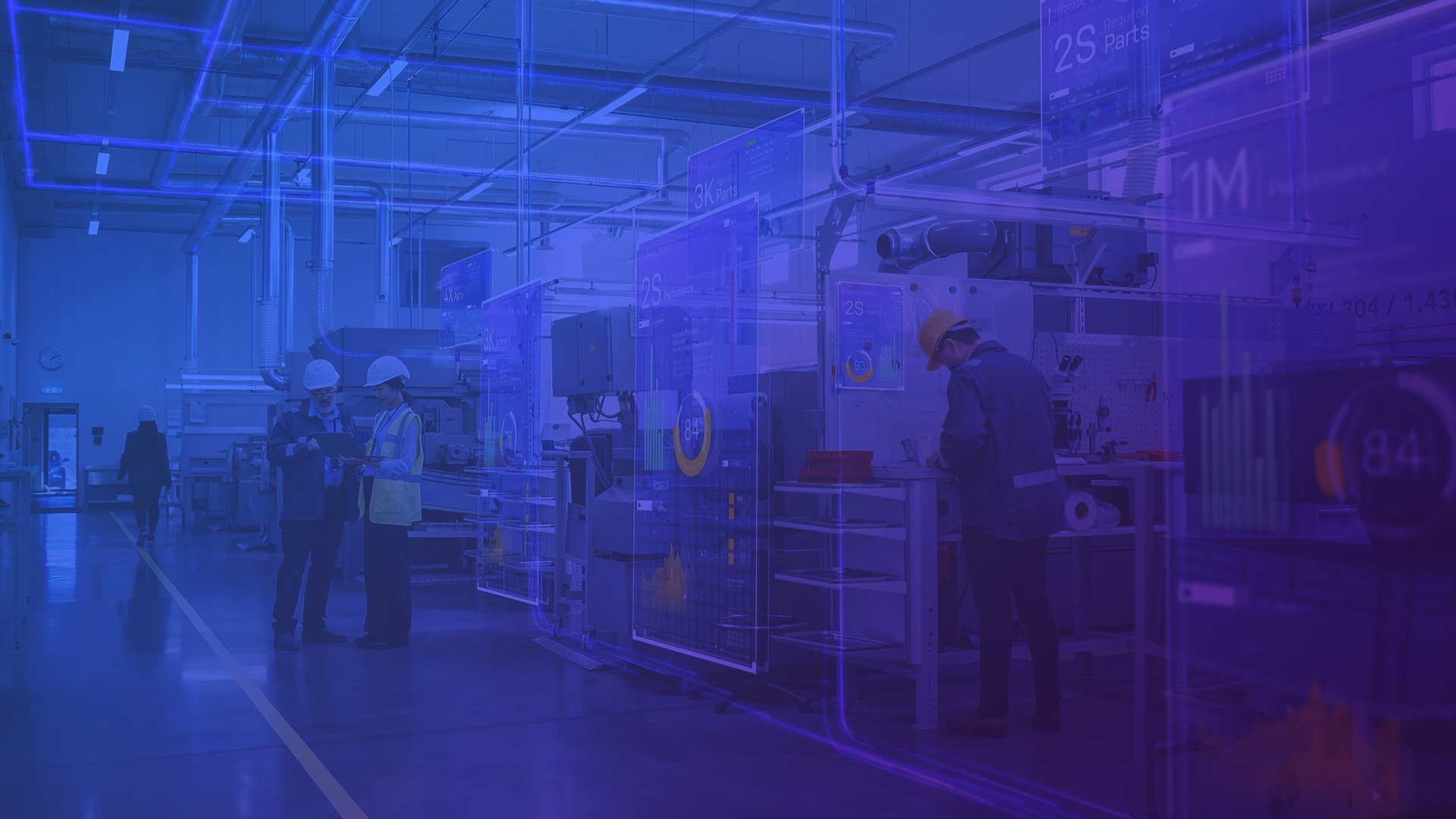What is Machine Data Recording (MDE) in Manufacturing?
-
- Machine Data Recording (MDE): involves a combination of hardware and software components working together to collect, analyse, and report data from machinery. The hardware components are responsible for capturing data directly from the machines, such as sensors and data acquisition devices, while the software processes, analyses, and presents this data in a meaningful way.
-
- Real-time Performance Monitoring: MDE continuously tracks how well your machines are operating, ensuring they are running efficiently at all times.
-
- Operational Status Updates: It keeps you informed about the current state of your machinery, whether they are functioning optimally or require attention.
-
- Fault Detection: MDE can identify potential issues before they become serious problems, allowing for immediate action to prevent breakdowns.
-
- Proactive Maintenance: With the insights gained from MDE, maintenance can be scheduled at the most opportune times, avoiding unplanned downtime and extending the life of your equipment.
-
- Maximizing Equipment Uptime: By preventing unexpected failures, MDE helps ensure your machines are available and productive when you need them, maximizing operational efficiency.
-
- Lifespan Extension: Through proactive maintenance and timely interventions based on MDE data, the overall lifespan of your machinery can be significantly increased, offering better return on investment.
What is Operating Data Recording (BDE) in manufacturing?
-
- Operating Data Recording (BDE) provides a broader perspective of your entire operations allowing to gathering data on production times, material usage, and worker performance. By providing detailed insights into how resources are used and how processes are carried out, BDE helps manufacturers to optimise their resource allocation, improve workflow, and enhance overall operational efficiency. This approach not only streamlines processes but also contributes to better decision-making, increased productivity, and potentially higher profitability. BDE acts as a critical tool for businesses looking to refine their operations and achieve greater operational excellence.
-
- Production Time Tracking: BDE meticulously records how long each production phase takes, helping to pinpoint areas where time can be saved.
-
- Material Usage Monitoring: It keeps track of the amount and type of materials used, allowing for more efficient use of resources and reducing waste.
-
- Worker Performance Evaluation: By assessing how workers perform their tasks, BDE can identify training needs and opportunities for improving productivity.
-
- Bottleneck Identification: BDE’s comprehensive data collection helps identify where processes slow down, enabling targeted improvements to increase efficiency.
-
- Resource Allocation Optimisation: With detailed insights from BDE, businesses can better allocate their resources, ensuring the right number of materials and labour are used where they are most needed.
-
- Process Streamlining: By analysing the data collected, BDE guides businesses in refining their operational processes, making them more efficient and reducing unnecessary steps.
-
- Improved Decision Making: The holistic picture provided by BDE supports better strategic decisions, leading to enhanced operational efficiency and productivity.
-
- Increased Productivity and Profitability: Through the insights gained from BDE, businesses can streamline operations, leading to higher productivity and, ultimately, increased profitability.
What is the difference between MDE and BDE?
-
- BDE: Targets broader operational data including production times, material usage, and worker performance. BDE aims to optimise overall operational efficiency by identifying bottlenecks and streamlining processes.
-
- On the other hand, MDE concentrates on machine-specific data, such as performance metrics, operational status, and faults. MDE focuses on maximizing machine uptime and efficiency, preventing faults, and extending equipment lifespan.
What are the benefits of MDE and BDE working together?
Integrating MDE and BDE offers a multitude of tangible benefits:
-
- Enhanced Productivity: Real-time machine monitoring allows for immediate intervention, minimizing downtime and production delays.
-
- Optimised Machine Utilization: Data-driven insights help identify and eliminate performance bottlenecks, ensuring machines operate at peak efficiency.
-
- Improved Quality Control: Early detection of potential quality issues through continuous data analysis reduces waste and rework, safeguarding product integrity.
-
- Streamlined Processes: MDE and BDE data fuel process optimisation, leading to increased efficiency and cost reduction.
Key Features:
Modern MDE and BDE solutions boast several key features:
-
- Comprehensive Data Collection: Capture a wide range of data points, from machine parameters to production rates and quality metrics.
-
- Seamless Integration: Integrate with existing enterprise software and manufacturing systems for a unified data flow and holistic analysis.
-
- User-Friendly Interface: Intuitive dashboards and visualizations facilitate data interpretation and informed decision-making.
Real-World Success Stories:
Leading manufacturers are reaping the rewards of MDE and BDE implementation. An automotive parts manufacturer increased productivity by 20% after deploying MDE to identify and address machine bottlenecks. A consumer goods company achieved a 15% reduction in operational costs through BDE-driven optimisation of labour allocation and production schedules.
Choosing the Right Solution:
Selecting the optimal MDE and BDE solution requires careful consideration:
-
- Compatibility and Scalability: Ensure seamless integration with existing infrastructure and the ability to adapt to future growth.
-
- Customization: Look for solutions tailored to your specific manufacturing processes and unique requirements.
-
- Support and Training: Choose vendors offering comprehensive support and training to ensure smooth implementation and user adoption.
Embrace the Data-Driven Future:
By harnessing the power of MDE and BDE, manufacturers can unlock a wealth of valuable insights, empowering them to achieve operational excellence, drive innovation, and secure a competitive advantage in the evolving industrial landscape.
This revised version maintains the informative spirit while adopting a more professional tone, utilizing impactful vocabulary and highlighting key benefits with specific examples.
Related Articles

MES System – Manufacturing Execution System – ANT Solutions
System MES – Manufacturing Execution System 0 % operating time increase 0 % defects quantity reduction 0 % material consumption reduction 0 % changeovers time

How does the production machine data acquisition software work?
Machine data acquisition software is a tool that enables the collection, storage, processing and visualisation of data from machines and equipment. This data can be

Machine Connectivity
Machine Connectivity Machine Connectivity is responsible for communication with machine’s PLC and devices, providing the real measurement from the machine for acquisition, processing and administration

